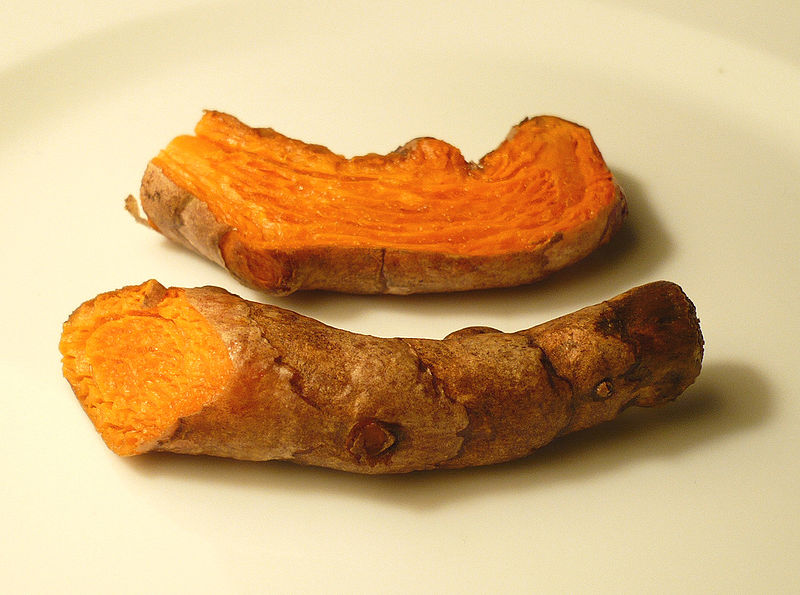Turmeric (Curcuma longa)

In the west, the root of this plant has been most well known for cooking. It is what gives curry its yellow colour, and it has been used as an adulterant in mustard. As a dye it creates a rich yellow colour. Here’s a great place to learn how to do that Crafting a Green World.
Turmeric paper can be made with tincture of Turmeric and used as a test for alkaloids and boric acid. There’s a good video to see how turmeric works in testing for boron here. I found it interesting what he says on the video about flower beds being higher in boron. Now you can test for it yourself.
Although many cultures have traditionally recognized its medicinal benefits, here in the west… well… we are learning. Ever since I started learning about herbal medicine I’ve had a particular fondness for this spice and its medicinal benefits, and after my recent sifting through hundreds (literally) of medical journal articles on Turmeric, it seems that others have been realizing its usefulness too. What are all those medical journals saying? While the majority of these have not been done on humans, here is just a tidbit of what I found that is being supported by modern scientific study:
- Cardiovascular protection – not only is it more effective than aspirin for preventing platelet aggregation [1], but it also reversed the dysfunction of certain tissues in the blood vessels, and decreased damage caused by lack of blood supply to the heart [2]. It even offered protection to the nervous tissue of the brain after stroke. [3] [4]
- Diabetes – In studies on rats Curcumin, considered the main constituent found in Turmeric, caused a decrease in blood glucose levels. [5] Turmeric also inhibited cataracts [6] and protected against nephropathy [7] in diabetic rats.
- Anti-inflammatory – As an anti-inflammatory it can be as effective as cortisone or phenylbutazone [8] After all the concern about pharmaceutical COX2 inhibitors, it is interesting to note that Curcumin down-regulates the expression of COX2, LOX, NOS, and many others [9], but without the side effects.
- Cancer – The research being done on cancer is very promising. Animal and human studies have demonstrated the ability for curcumin to inhibit cancer at various stages. [10] Studies on cancer include ovarian cancer [11], leukemia [12] [13], cervical cancer [14], prostate cancer [15], skin tumours [16], and colon cancer [17]. It’s shown to be very useful in combination with conventional drugs against multi-drug-resistant cancers [18] [19], and is a strong radiosensitizer of cervical and prostate cancer cells [20] [21] while at the same time protecting normal cells [22].
- Anti-depressant – studies, mostly in mice, have demonstrated antidepressant activity that is better than the antidepressant fluoxetine, and has a synergistic effect when used with antidepressant drugs [23] Anti-oxidant – turmeric is a strong free radical scavenger, and has chelating activity (ferric and ferrous ions) [24]. In a study on rats it protected against cataracts [25].
- Anti-microbial – as an anti-microbial, turmeric or its constituents have demonstrated effectiveness in dealing with a number of infective organisms, including: fungi, protozoa [26], and bacteria [27]. An Ethyl acetate extract of Turmeric was also effective for MRSA (Methicillin-resistant Staphylococcus aureus) [28].
- Cholesterol – turmeric is effective for lowering cholesterol, even in small amount [29, and protects against hyperlipidemia [30]. What’s really interesting is that turmeric apparently lowers cholesterol by changing gene expression [31].
- Auto-immune Disease – some studies have shown that it helps multiple sclerosis, rheumatoid arthritis, psoriasis, and inflammatory bowel disease [32]
- Liver protection – turmeric protects the liver from damage caused by Carbon tetrachloride (CCL4), galactosamin, acetaminophen, and Aspergillus aflatoxin [33], as well as issues caused by smoking and drinking [34]. As you can see, if turmeric isn’t already included in your regular diet, it is certainly a functional food worth considering. In my practice I give it to clients for a variety of conditions including as part of a formula for cardiovascular issues, and as a wonderful anti-oxidant and anti-inflammatory.
Around our house we use turmeric in many things, including our eggs in the morning. How do you include this healthful spice in your life?
Elizabeth
———
- Bioresour Technol. 2006 Aug;97(12):1372-6. Epub 2005 Aug 19.
- J Vasc Surg. 2004 Dec;40(6):1216-22
- Nitric Oxide. 2008 Aug;19(1):1-11. Epub 2008 Apr 26
- Neurochem Res. 2008 Sep;33(9):1672-82. Epub 2007 Oct 23
- Plant Foods Hum Nutr. 2007 Mar;62(1):25-9. Epub 2007 Jan 17
- Invest Ophthalmol Vis Sci. 2005 Jun;46(6):2092-9
- Clin Exp Pharmacol Physiol. 2006 Oct;33(10):940-5
- Alt Med Rev Vol 6, Supplement 2001 pg S-62
- Anticancer Res. 2003 Jan-Feb;23(1A):363-98
- Alt Med Rev Vol 6, Supplement 2001 pg S-62
- Cell Biol Int. 2006 Mar;30(3):221-6. Epub 2005 Dec 22
- In Vivo. 2008 Jan-Feb;22(1):63-8
- Biochem Biophys Res Commun. 2006 Feb 10;340(2):359-68. Epub 2005 Dec 13
- Mol Carcinog. 2006 May;45(5):320-32
- Oncogene. 2004 Feb 26;23(8):1599-607
- Nutr Cancer. 2002;44(1):66-70
- Planta Med. 2007 Jul;73(8):725-30. Epub 2007 Jun 22
- Biochem Pharmacol. 2004 Nov 15;68(10):2043-52
- BMC Cancer. 2004 Apr 17;4:13
- Oncogene. 2004 Feb 26;23(8):1599-607
- Mol Cancer Ther. 2003 Jan;2(1):95-103
- Mol Pharmacol. 2008 May;73(5):1491-501. Epub 2008 Feb 5
- J Ethnopharmacol. 2002 Nov;83(1-2):161-5
- Chem Biol Interact. 2008 Jul 10;174(1):27-37. Epub 2008 May 7
- Indian J Exp Biol. 2004 Jun;42(6):601-3
- Alt Med Rev Vol 6, Supplement 2001 pg S-62
- Biol Chem. 2005 May;386(5):481-90
- Phytother Res. 2005 Jul;19(7):599-604
- Alt Med Rev Vol 6, Supplement 2001 pg S-62
- J Med Food. 2005 Summer;8(2):256-60
- J Nutr Biochem. 2007 Feb;18(2):113-9. Epub 2006 May 18
- J Immunol. 2002 Jun 15;168(12):6506-13
- Alt Med Rev Vol 6, Supplement 2001 pg S-62
- Mol Cell Biochem. 2006 Aug;288(1-2):115-23. Epub 2006 May 12

